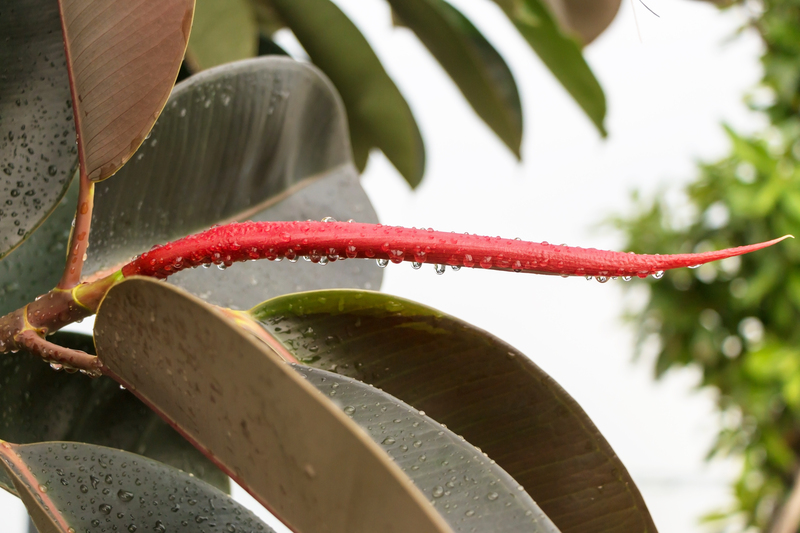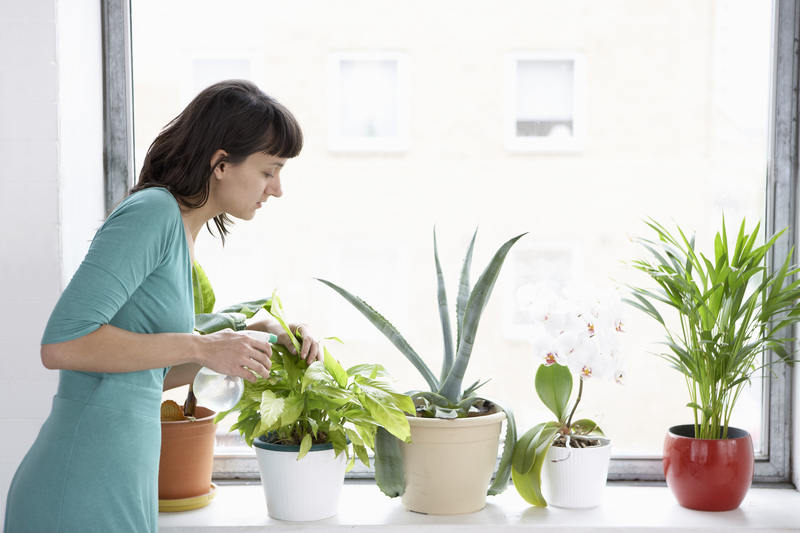Secrets to Building a Playful Garden for Children
Posted on 24/06/2025
A garden is far more than a spot for beautiful plants or a place to relax with a cup of tea. For families, a backyard can become a magical destination--for adventure, imagination, and precious memories. If you want to build a playful garden for children, you're not just creating a physical space; you're nurturing creativity, exploration, and a deep love of nature. In this comprehensive guide, uncover the top secrets to building a playful children's garden, packed with expert tips, fun design ideas, plant suggestions, and safety essentials to inspire both you and your kids.
Why Create a Child-Friendly and Playful Garden?
Transforming your outdoor space into a playful kids' garden offers endless benefits. Not only does it encourage children to spend more time outdoors, but it cultivates vital life skills, supports physical activity, and sparks curiosity about the natural world. Research shows that children who garden develop better concentration, emotional balance, and creativity than those who do not have regular outdoor time.
- Physical Development: Running, digging, and climbing in a playful garden boosts coordination and strength.
- Sensory Stimulation: Touching plants, smelling flowers, and listening to birds engages all the senses.
- Learning Opportunities: From plant life cycles to bug watching, gardens offer endless informal learning.
- Bonding: Gardening as a family strengthens relationships and fosters teamwork.

Planning Your Playful Garden for Children: Key Considerations
Safety First
Before unleashing your imagination, ensure your children's play garden is secure. Start by fencing the area if possible, remove toxic plants, cover ponds or large containers, and check for sharp tools or hazardous debris. Keep garden paths clear and make sure play structures are stable and age-appropriate. Safety underpins the freedom kids need to enjoy their outdoor space.
Location, Size & Layout
- Sun and Shade: Observe your garden's sunlight patterns. Blend sheltered zones with open spaces for varied play and comfort.
- Visibility: Position the play area where adults can supervise easily.
- Pathways: Windy or stepping-stone paths add intrigue and guide movement.
- Zones: Designate spaces for active play, quiet reflection, and messy creativity. Zones could include a lawn, an edible patch, or a sensory corner.
Involving Kids in the Design
*Get your children involved!* Ask what activities they would love--do they dream of a fairy garden, a dig zone, a den, or simply lots of flowers for picking? Kids' ideas tend to be playful and bold, exactly what makes a backyard magical. Encourage them to sketch their dream garden before you start.
Must-Have Elements in a Playful Children's Garden
1. Living Tunnels, Huts & Hideaways
- Willow or beanpole tunnels: Train climbing beans, sweet peas, or willow stems to form magical corridors or teepees for hiding and daydreaming.
- Natural dens: Simple structures made from branches, logs, or large shrubs can inspire imaginative games and offer quiet retreats.
2. Playful Paths and Secret Trails
- Stepping stones: Lay a winding path using flat stones, old tiles, or logs. Paint some with numbers, letters, or fun symbols.
- Hidden corners: Create surprises at every turn--maybe a fairy door, a miniature garden, or a wind chime hanging from a tree.
3. Sensory Zones: Engage Every Sense
- Touch: Plant fuzzy lamb's ears, textured grasses, or succulents. Add sand pits or water play areas for different sensations.
- Sound: Hang bells, chimes, or leave a bamboo grove for rustling breezes.
- Smell: Herb spirals and scented flowers (like lavender, mint, or sweet peas) are irresistible to curious noses.
- Sight: Choose plants with bold shapes, bright colors, and plenty of wildlife appeal.
- Taste: Edible gardens let kids snack as they play! Try strawberries, blueberries, cherry tomatoes, or snap peas.
4. Active Play Features
- Climbing structures: Kid-sized climbing walls, sturdy trees with ropes, or wooden play gyms develop agility and confidence.
- Swings and slides: Classic fun for all ages; consider tire swings or incorporate smaller slides for younger kids.
- Balance beams or logs: Encourage coordination and offer simple challenges.
- Mud kitchens: Old sinks or tables, pots, pans, and utensils for messy, creative play.
5. Spaces That Invite Creativity
- Art corners: Outdoor easels, chalkboards, or places to press flowers and leaves.
- Building areas: Logs, rocks, and sticks for stacking, building, or fairy house designs.
- DIY bird feeders: Let kids upcycle and decorate feeders to attract wildlife and observe birds up close.
Choosing the Right Plants for a Child-Friendly Garden
Gardens designed for children should be both resilient and enchanting. Select non-toxic, low-maintenance, and interactive plants to keep young explorers safe while nurturing their curiosity.
Recommended Plants:
- Sunflowers: Fast-growing, tall, and dramatic--great for bean teepees and sunflower houses.
- Snapdragons: Bright, easy to grow, and fun to squeeze.
- Lamb's ears: Velvety, irresistible texture for little fingers.
- Strawberries: Edible and excellent for snacking during play.
- Marigolds and nasturtiums: Hardy, colorful annuals--nasturtium leaves and flowers are edible too!
- Scented herbs: Lavender, mint, lemon balm, and rosemary offer sensory delights and repel pests.
Tip: Avoid spiny, thorny, or toxic plants like foxglove, nightshade, or yew, which can be dangerous for little ones.
Creative Themes for a Magical Children's Garden
Choosing a theme can help tie your playful garden design together and fuel children's imagination for years to come. Here are some fun children's garden themes to consider:
- Fairy tale garden: Tiny doors, miniature houses, and mushroom seats tucked away among ferns and flowers.
- Wildlife wonderland: Butterfly-attracting flowers, insect hotels, and birdbaths for up-close nature observation.
- Edible adventure: Mix veggies, herbs, berries, and climbing beans for snack-filled fun.
- Dinosaur dig zone: Sandpits with "fossils," large leaves, and rocky areas invite paleontologist play.
- Construction site: Loose parts, tires, and logs for building and creativity.
Balancing Order and Wildness for Play
The best playful backyard gardens for children have structured areas (like lawns and paths) mixed with wilder corners for exploration. Allowing some untamed spots--where wildflowers grow, leaves collect, and bugs abound--can nurture children's sense of adventure and support biodiversity at the same time.
- Leave part of the grass unmown for bug hunting and butterfly watching.
- Stack logs or create a brush pile for insects and hedgehogs.
- Let kids collect treasure--leaves, feathers, weird-shaped sticks-- to fuel natural creativity.
Year-Round Engagement: Keeping the Play Garden Fun Across Seasons
A truly playful garden for children is fun 12 months of the year. With a little planning, your outdoor haven can become a place for spring planting, summer splashing, autumn scavenger hunts, and winter wildlife watching.
- Spring: Sow seeds, dig, and watch seedlings pop up. Add wind chimes and bird feeders.
- Summer: Water play, shade tents, and soft lawns are perfect for picnics and games.
- Autumn: Leaf mazes, collecting conkers and acorns, and preparing wildlife homes.
- Winter: Hang fat balls for birds, hunt for animal tracks, or decorate trees with weather-proof crafts.
Encouraging Wildlife in Your Playful Garden
Teaching children about wildlife-friendly gardens helps them become caretakers of nature. To make your garden playful for kids and animals alike, try the following:
- Install a small pond or birdbath (securely covered for young children).
- Hang bug hotels and leave a corner wild for insects and hedgehogs.
- Grow nectar-rich flowers to attract bees and butterflies.
- Add seed and nut feeders to help birds thrive.
Tips for Long-Lasting Play and Family Fun
- Let kids help with sowing, watering, and harvesting. Young gardeners who get hands-on experience become invested in their outdoor world.
- Rotate activities and add seasonal interest. Change crafts, plantings, or scavenger hunts with the time of year.
- Celebrate garden milestones--first tomato, tallest sunflower, most unusual bug found.
- Encourage messy play. It's vital for development and pure joy.
- Invite friends for garden parties, picnics, or scavenger hunts to build community and social skills.
Common Mistakes to Avoid in a Playful Children's Garden
- Too much structure: Over-planning can limit creativity and adventure for children. Leave space for unstructured, open-ended play.
- Unsafe features: Avoid sharp-edged furniture, unsteady climbing structures, poisonous plants, and deep ponds without covers.
- Neglecting maintenance: A neglected play garden can become overgrown or hazardous. Involve the whole family in regular tidy-ups.
- Ignoring accessibility: Paths should be wide, smooth, and easy for all ages and abilities.

Inspiration from Around the World: Magical Play Gardens
Need a spark of inspiration for your children's outdoor paradise? Here are a few renowned playful garden designs for kids from various cultures:
- Japan: Children's gardens often include miniature bridges over koi ponds, stepping stones, and mossy nooks for quiet reflection or play.
- UK: Many British gardens feature "wild areas" for den-building and fairy hunts, with edible patches and big leafy plants for shelter.
- Australia: Bush play spaces are filled with logs, stones, and native plants for climbing and exploring nature's textures.
- USA: Community gardens and schoolyard "pollinator patches" offer edible zones and butterfly gardens for hands-on learning.
Let these examples spark your imagination when personalizing your own playful garden for children.
Final Thoughts: The True Joy of Building a Playful Garden for Children
A playful children's garden is a space teeming with wonder, laughter, and learning--a place to splash in water, plant seeds, create art, and simply be a child. The greatest secret is that the magic isn't just for kids: tending such a garden reconnects adults with the simple joys of their own childhoods, too.
By prioritizing safe, imaginative, and interactive garden elements, you lay the foundation for years of play and discovery. Involve children in every step, mix wild freedom with playful features, and your backyard will blossom into an enchanting oasis for the whole family.
Happy gardening--and may your playful garden for children bring endless delight!

